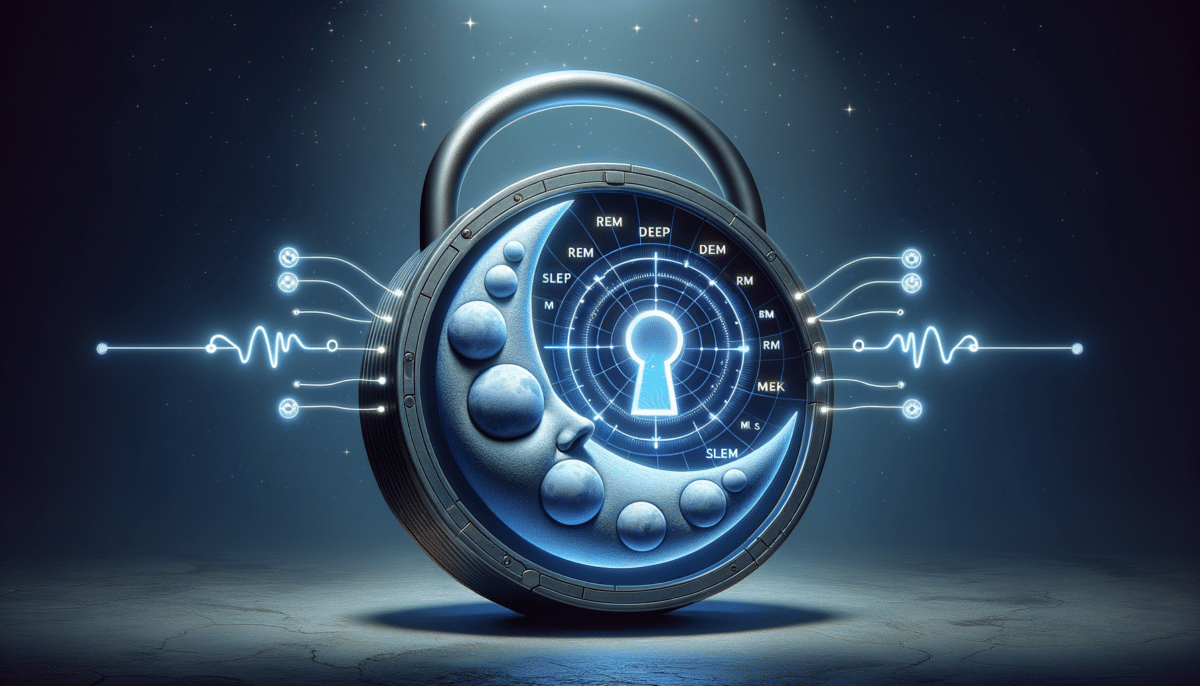Understanding Sleep Cycles: A Brief Overview
Sleep is not a uniform state but rather a complex cycle of different stages that our bodies go through every night. Understanding these cycles is crucial for anyone looking to improve their sleep quality. Typically, sleep is divided into two main types: REM (Rapid Eye Movement) and non-REM sleep. Non-REM sleep is further divided into three stages, each serving different restorative functions. The first stage is light sleep, where the body begins to relax. The second stage is a deeper form of sleep where the heart rate slows and body temperature drops. The third stage, often referred to as deep sleep, is where the body repairs tissues, builds bone and muscle, and strengthens the immune system. REM sleep, on the other hand, is associated with dreaming and memory consolidation.
On average, a complete sleep cycle lasts about 90 minutes, and a person goes through four to six cycles per night. Disruptions in these cycles can lead to sleep disorders and affect overall health. Recognizing the importance of these cycles, many individuals turn to sleep cycle trackers to monitor their sleep patterns and make informed decisions about their sleep hygiene.
The Rise of Sleep Cycle Trackers
In recent years, sleep cycle trackers have gained popularity as a tool to help individuals understand and improve their sleep patterns. These devices, often worn as wristbands or integrated into smartwatches, use a combination of movement sensors and heart rate monitors to track the different stages of sleep. By analyzing this data, users can gain insights into their sleep quality and identify any disruptions or irregularities in their sleep cycles.
One of the primary benefits of sleep cycle trackers is their ability to provide personalized feedback. Unlike traditional sleep studies conducted in a lab, these devices offer continuous monitoring in the comfort of the user’s own home. This allows for a more comprehensive understanding of one’s sleep patterns over time. Additionally, some trackers offer features such as smart alarms, which are designed to wake users during the lightest stage of sleep, reducing grogginess and improving morning alertness.
However, it’s important to note that while sleep cycle trackers offer valuable insights, they are not a substitute for professional medical advice. Users should be cautious about making significant lifestyle changes based solely on the data provided by these devices.
Benefits of Monitoring Sleep Cycles
Monitoring sleep cycles offers numerous benefits that can significantly enhance one’s overall well-being. Firstly, understanding sleep patterns can help identify underlying issues that may be affecting sleep quality, such as sleep apnea or insomnia. By recognizing these patterns, individuals can seek appropriate medical interventions or make lifestyle adjustments to improve their sleep.
Moreover, tracking sleep cycles can lead to better sleep hygiene. By becoming aware of how different factors, such as caffeine intake or screen time, impact sleep, individuals can make informed decisions to optimize their nighttime routine. For instance, if a sleep tracker shows frequent awakenings after late-night coffee consumption, it may prompt users to adjust their habits for better sleep.
Additionally, consistent monitoring can help in setting and achieving sleep goals. Whether it’s aiming for a specific amount of deep sleep or maintaining a regular sleep schedule, having concrete data can motivate individuals to prioritize their sleep health. This, in turn, can lead to improved mood, enhanced cognitive function, and better physical health.
Choosing the Right Sleep Cycle Tracker
With a plethora of sleep cycle trackers available on the market, choosing the right one can be a daunting task. However, by considering a few key factors, individuals can find a device that suits their needs and preferences. Firstly, it’s essential to consider the type of data the tracker provides. Some devices offer basic information such as sleep duration and quality, while others provide more detailed insights into the different stages of sleep.
Another important consideration is the device’s comfort and ease of use. Since sleep trackers are typically worn overnight, it’s crucial to choose a device that is comfortable and doesn’t interfere with sleep. Additionally, users should consider the device’s compatibility with other technology, such as smartphones or fitness apps, to ensure seamless integration into their daily routine.
Lastly, considering the price point and any additional features, such as smart alarms or personalized sleep coaching, can help narrow down the options. By evaluating these factors, individuals can select a sleep cycle tracker that aligns with their lifestyle and sleep goals.
Conclusion: Embracing Technology for Better Sleep
In today’s fast-paced world, prioritizing sleep is more important than ever. Sleep cycle trackers offer a valuable tool for individuals seeking to understand and improve their sleep patterns. By providing personalized insights and fostering better sleep hygiene, these devices can lead to enhanced overall health and well-being.
However, it’s crucial to remember that while technology can provide useful data, it should be used in conjunction with professional advice when addressing sleep-related issues. Embracing the benefits of sleep cycle trackers can be a step towards achieving better sleep and, ultimately, a healthier lifestyle.
